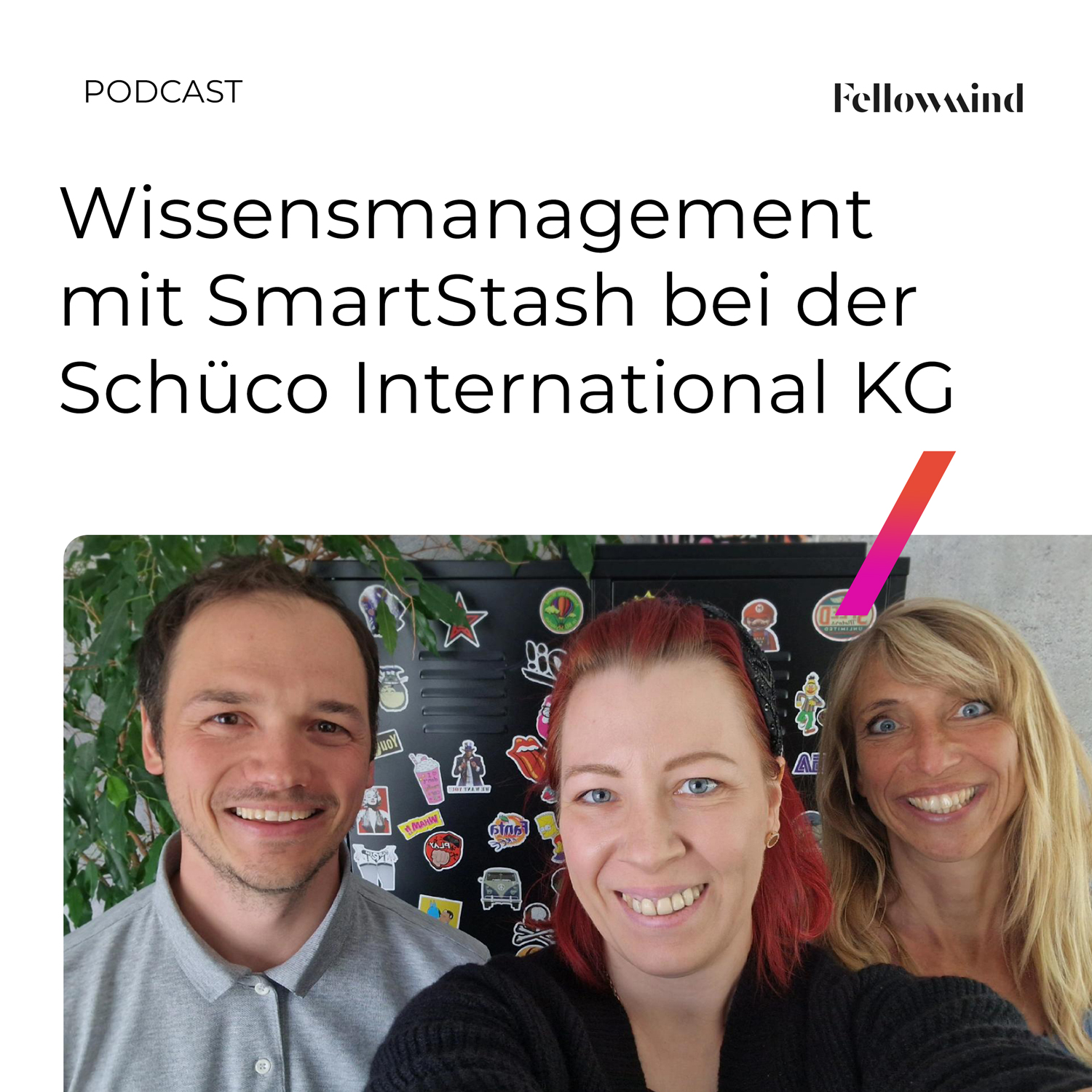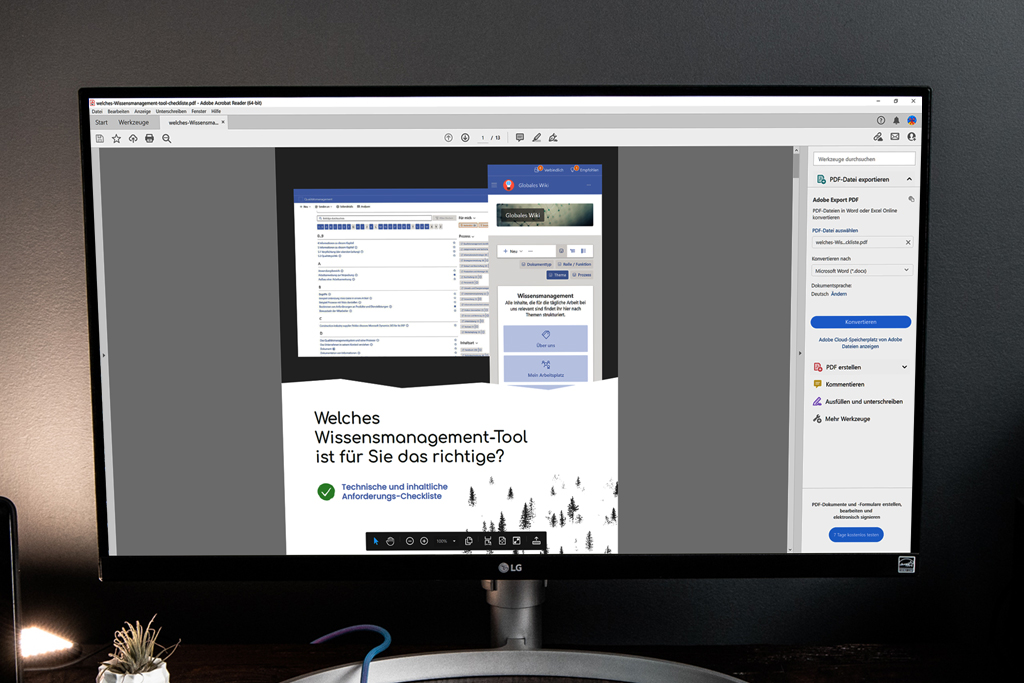Knowledge management with SmartStash at Schüco International KG
The four phases in the knowledge management project - also listen to the podcast!

Following the successful introduction of Microsoft 365 by Fellowmind at Schüco International KG, the Product Lifecycle Management (PLM domain) department at Schüco was looking for a knowledge management solution. They were looking for a tool that would increase efficiency in knowledge management and facilitate the handling of knowledge articles.
SmartStash Podcast - Knowledge management with SmartStash at Schüco International KG
While sifting through various tools, a tip came from internal IT at Schüco that Fellowmind also offers a knowledge management solution with the SmartStash add-on, which is directly integrated into the complete Microsoft 365 world on the basis of SharePoint. This and of course the many cool application possibilities of SmartStash quickly convinced us. Because when we asked Carl Frankrone, international project manager PLM at Schüco, in the podcast about his main selection criteria for a good knowledge management tool, his answer was:
- Good usability (easy access to knowledge by users)
- Simple design options (easy handling and editing of the tool)
- Good organizational anchoring in the company
After the decision was made in favor of SmartStash, the knowledge management project and thus the introduction of SmartStash was started in the first department at Schüco.

The knowledge management project
Phase 1: Assessment and preparation of previous knowledge
In order to successfully establish knowledge management in a company, it should first be clear what knowledge actually is and how the tool fits in. What should the tool be able to do? Sounds logical, but sometimes it's not that easy. So at the beginning, we briefly looked together at how digital knowledge differs from news and general company information. We also looked at what knowledge already exists in the company, where it is located and how it can find its way into the new "wiki".
Carl's department also already had a wiki in which knowledge, especially about work processes, was recorded and documented. So the team asked themselves, "What do we do with our old articles that are no longer up-to-date, at least didactically?" Here, SmartStash offers simple input options, but to have the greatest effect, the content should be completely rebuilt. Under the motto "Less is more," the previous body of knowledge was evaluated and cleaned up. Only the articles with sufficient relevance made it into the new knowledge base and were prepared and reformulated for it, because the didactic revision was very important to the team. Thus, all knowledge content was clustered at the beginning:
- What must be adopted
- Who is responsible
- What machining is necessary
It is also important here to use the opportunity to structure knowledge differently. Here SmartStash offers a wide range from hierarchical organization, to tags. This also requires a different sorting to ensure access.
The team also decided to only use PDFs in the future if they have already been created, since editors are not good at making last-minute changes in PDFs. Finally, timeliness is an essential criterion for good knowledge management.
Phase 2: Establishment and structure of a knowledge database
While Carl's team was still able to organize everything quite well on their own in phase 1, Fellowmind's SmartStash team provided more support in phase 2. In a "SmartStash Deep-Dive", the team was first introduced to all the important functions.
It was also quickly clear to the team that tool-supported knowledge management as an encyclopedia has 2 pillars:
- The tool environment
- The structuring of this knowledge, as well as the way it is found
So the team now addressed the question: How do I structure knowledge correctly? Once the structure had been established, it was necessary to define the tags in a meaningful way so that they could be easily oriented in the new knowledge database. Here, too, the team made use of the motto "Less is more" and, after a long process of finding the right tags and several controversial discussions, agreed on a few tags, which were not allowed to appear twice in a hierarchy tree, so that the search would remain clear. Also note that there is only one hierarchy level for tags. New tags are now extensively discussed whether they really add value.
These discussions are part of a dynamic and valuable knowledge process. In the end, everyone was satisfied and pleased with the lean structure.
Phase 3: Defining roles and activities for active knowledge management
In addition to the functions and the structure, the roles of the people involved are of enormous importance in knowledge management. This "organizational anchoring" is the guarantee that knowledge management is alive.
This means that for a knowledge management cycle, I need a fixed definition of roles and rights. This is precisely aligned with the processes, goals and compliance requirements of each company or organization. The roles to be assigned determine the areas of responsibility in knowledge management, as there are:
- Content managers
- Readers
- Knowledge Management Officer
- Knowledgeable
- Editors and copy editors
- Compliance Officer
- Topic responsible
At Schüco in Carl's specialist area, not all roles were required. However, this can look completely different in another department. It's nice that SmartStash can be used quite flexibly.
Another point for successful knowledge management is the understanding of the respective role and the associated tasks in the entire knowledge process. For example: how is knowledge created, who is responsible, and how is knowledge collected and distributed by the knowledge bearer? This process must be clear. Then content managers can create global structures, editors can write articles, and topic managers can organize knowledge into departments. Readers can consume and must also give feedback so that the articles are consistently up-to-date and of high quality. Everyone is responsible for a good knowledge management climate in the company, says Carl!
Once the roles and processes have been defined, it is essential to take the responsibilities seriously. This includes a simple but important requirement: in order to fulfill a role well, the relevant people must be given time to do so. It is imperative to raise management's awareness of this important activity and to demand support.
Carl reports this very nicely, because at Schüco they have formed a key user circle content manager ("content police") in his department, which for example checks if the right tags have been used and if new tags should be included. Initially, the circle met every 2 weeks, Carl further described, there is a meeting to discuss new & future articles (now once a month). Organizational issues also come up here. So far, seven content managers, as well as about 50 editors, take care of well-sorted, knowledge-rich reading material for about 1000 readers. Teams helps to provide a framework for content managers and editors in which all relevant operational information, working documents and meetings are shared in a team.
Phase 4: Designing the knowledge articles and keeping the knowledge base alive
Who doesn't know this in companies? It often takes a lot of communication and discipline to drive internal projects forward with the same relevance as external projects. Optimally, the articles are created in the ongoing process, and before the first silos form. That's why it's important to make all employees aware of the big picture and explain why these processes exist and that it's important for everyone to participate. And if there are a lot of changes to be made and everyone can't get their act together, then they simply invite everyone to a writing marathon with croissants and coffee in the morning and pizza and cold drinks at lunchtime in a secluded project room where the content can be adapted and topics discussed undisturbed on a few days.
To ensure that knowledge is also consumed with pleasure, it helps if knowledge articles are attractively designed. An appealing design, well-structured, reader-friendly text with small highlights and videos - all this helps to make content more attractive, especially for the younger generations.
I hope we were able to give you a good first insight into a possible knowledge management project and many thanks to Carl Frankrone from Schüco International KG for the insight into his knowledge management project.
Listen to the podcast for more details. Listen in, it's worth it!

More recent contributions


